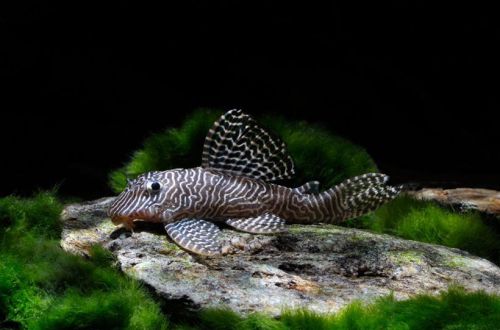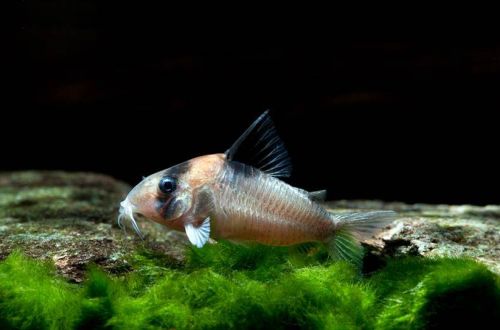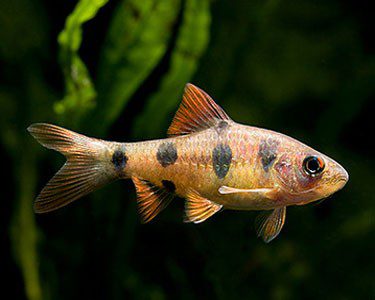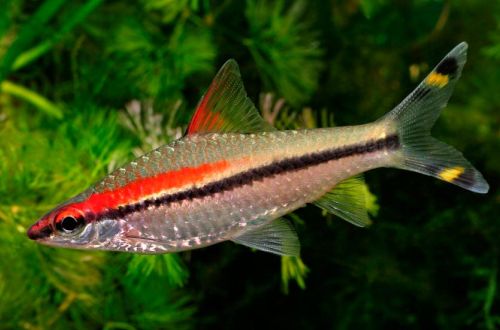
Painted Plecostomus
Catfish Queen Arabesque or Painted Plecostomus, scientific name Hypancistrus sp. L260, belongs to the family Loricariidae (Mail catfish). Although this catfish still does not have a generally accepted scientific classification (indexes in the Latin name indicate this), this did not prevent it from becoming one of the most popular species of this family. It has a beautiful contrasting coloration, is easy to keep and is compatible with other fish. All this makes it a good choice for both the beginner and the experienced aquarist.

Contents
Habitat
It comes from South America from the lower basin of the Tapajos River, in the Brazilian state of Para. Inhabits the main channel of the river and its numerous tributaries. It prefers regions with rocky substrates and a large number of snags, among which the catfish finds a reliable shelter from numerous predators.
Brief information:
- The volume of the aquarium – from 80 liters.
- Temperature – 24-30°C
- Value pH — 5.5–7.5
- Water hardness – 1–15 dGH
- Substrate type – any
- Lighting – subdued or moderate
- Brackish water – no
- Water movement – moderate or strong
- The size of the fish is 8–9 cm.
- Food – any sinking food
- Temperament – peaceful
- Content alone or in a group
Description
Adult individuals reach a length of 8–9 cm. The catfish has a typical body shape for Plecostomuses – a large head, large fins with thickened first rays that have turned into sharp spikes. The dark coloration of the body is dotted with a pattern of white curving lines. Sexual dimorphism is weakly expressed, males and females are difficult to distinguish.
Food
Omnivorous species. Will accept both dry food in the form of flakes and granules, as well as live and frozen foods, such as brine shrimp, daphnia, bloodworms. From time to time, you can serve pieces of green vegetables: cabbage, cucumber, zucchini, etc.
Maintenance and care, arrangement of the aquarium
The optimal size of the aquarium for 2-3 catfish starts from 80 liters. The decoration is arbitrary, provided that there are a sufficient number of suitable shelters. They can be made from snags and/or piles of large stones, as well as from artificial decorative objects, or from fragments of pipes, ordinary ceramic pots turned over on their side, etc. When choosing living plants, it is worth giving preference to species that can grow on the surface of snags and stones. Rooted plants can be dug up by fish from the ground.
When keeping the Painted Plecostomus, there are no difficulties if it is in a suitable aquatic environment for it in the permissible range of temperatures and values of hydrochemical parameters. Achieving stable water conditions is not so difficult. It is necessary to install the necessary equipment and regularly carry out maintenance procedures for the aquarium, at least weekly replace part of the water (30–50% of the volume) with fresh water and remove organic waste (food debris, excrement).
Behavior and Compatibility
Peaceful calm catfish, compatible with many other freshwater species. Thanks to its reliable armor, it can get along with some quarrelsome fish, if they are not too large. Combination with other representatives of the genus Hypancistrus should be avoided in order to avoid the appearance of hybrid offspring.
Breeding / breeding
Considered easy to breed. Under favorable conditions, spawning is not uncommon. True, due to the complexity of determining gender, it will be necessary to purchase a group of 5 or more fish to guarantee the presence of at least one male / female pair.
Reproduction. With the onset of the mating season, the male occupies an area at the bottom of the aquarium, the center of which is usually some kind of shelter. After a short courtship, the pair form a clutch. Then the female swims away, and the male remains to protect the future offspring until the fry appear and begin to swim freely.
Fish diseases
The cause of most diseases is unsuitable conditions of detention. A stable habitat will be the key to successful keeping. In the event of symptoms of the disease, first of all, the quality of the water should be checked and, if deviations are found, measures should be taken to correct the situation. If symptoms persist or even worsen, medical treatment will be required. Read more about symptoms and treatments in the Aquarium Fish Diseases section.





